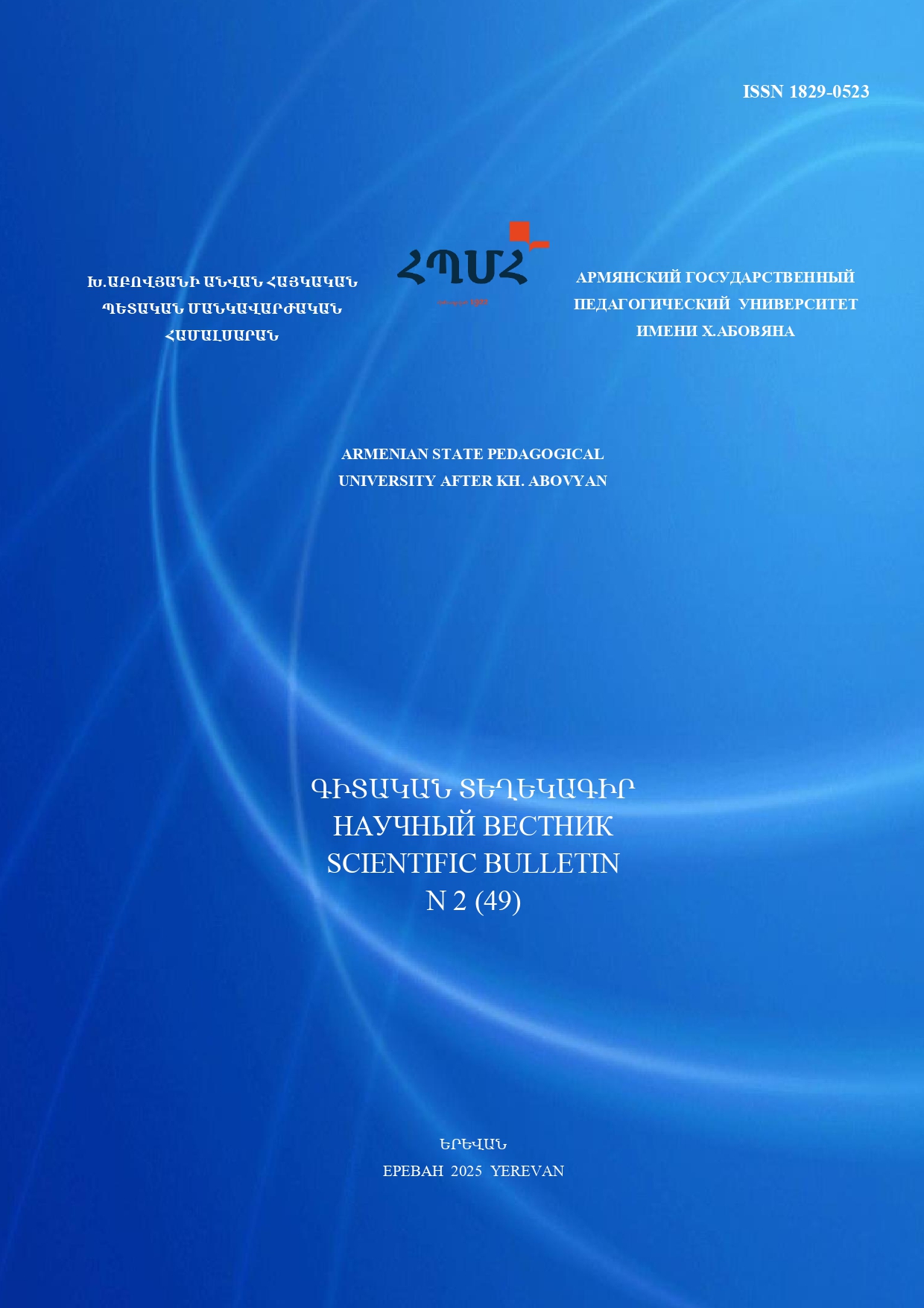INCORPORATING PHYSIOLOGICAL FACTORS IN THE PEDAGOGICAL METHODOLOGY FOR THE PRESERVATION AND DEVELOPMENT OF THE SINGING VOICE
DOI:
https://doi.org/10.24234/scientific.v2i49.219Keywords:
singing lessons, vocal performing art, physiological phenomenon, abdominal breathing, voice development, rapid breathing, methodologyAbstract
The article addresses the issue of accounting for physiological phenomena in the pedagogical methodology of maintaining and developing the singing voice. It substantiates that vocal performance art has a significant impact on the singer’s physiology. Throughout their career, singers strive to understand their body and the peculiarities of their organism, adapting them to their professional activity. Certain changes that occur over a lifetime can influence the quality, resonance, brightness, and power of the voice; therefore, singers must be informed in order to ensure the proper development of their voice. From this perspective, it is noted that during vocal training, singers should monitor their body, diet, sleep, and rest regimen, as these are essential components that ensure a healthy and melodious voice. Vocal art is similar to sports: it requires mindful nutrition, proper rest and sleep, muscle training, and physical preparation for intense rehearsals. This is because not only the vocal cords and larynx are engaged during singing, but the entire body participates in the process.
References
Abitbol, J., Abitbol, P., & Abitbol, B. (1999). Sex hormones and the female voice. Journal of Voice, 13(3), 424–446. https://doi.org/10.1016/S0892-1997(99)80048-2
Amir, O., & Rabin, J. (2004). Female sex hormones and the voice. Journal of Voice, 18(3), 363–370.
Baker, J. (1992). Premenstrual vocal syndrome: A real entity. Journal of Voice, 6(3), 198–203.
Boone, D. R., & McFarlane, S. C. (2005). The voice and voice therapy (7th ed.). Pearson Education.
Cotter, L. A., Arendt, H. E., Cass, S. P., & Yates, B. J. (2004). Role of the vestibular system in regulation of respiratory muscle activity during movement. Brain Research, 1023(1), 104–117. https://doi.org/10.1016/j.brainres.2004.07.052
Grape, C., Sandgren, M., Hansson, L. O., Ericson, M., & Theorell, T. (2003). Does singing promote well-being? An empirical study of professional and amateur singers during a singing lesson. Integrative Physiological and Behavioral Science, 38(1), 65–74. https://doi.org/10.1007/BF02734261
Hixon, T. J., Hoit, J. D., & Weismer, G. (2020). Preclinical speech science: Anatomy, physiology, acoustics, and perception (3rd ed.). Plural Publishing.
Hunter, E. J., Smith, M. E., & Tanner, K. (2011). Gender differences affecting vocal health of women in vocally demanding careers. Logopedics Phoniatrics Vocology, 36(3), 128–136.
Lessac, A. (1997). The use and training of the human voice: A bio-dynamic approach to vocal life. Mayfield Publishing Company.
Luo, H., Zhou, Y., Lin, H., Li, Y., & Li, Y. (2022). Acute effects of singing on cardiovascular biomarkers. International Journal of Environmental Research and Public Health, 19(15), 9526. https://doi.org/10.3390/ijerph19159526
Ma, X., Yue, Z. Q., Gong, Z. Q., Zhang, H., Duan, N. Y., Shi, Y. T., Wei, G. X., & Li, Y. F. (2017). The effect of diaphragmatic breathing on attention, negative affect and stress in healthy adults. *Frontiers in Psychology, 8, 874. https://doi.org/10.3389/fpsyg.2017.00874
Russo, M. A., Santarelli, D. M., & O’Rourke, D. (2017). The physiological effects of slow breathing in the healthy human. Breathe, 13(4), 298–309. https://doi.org/10.1183/20734735.009817
Stemple, J. C. (1994). Voice therapy: Clinical studies. Mosby.
Stemple, J. C. (2000). Voice therapy: Clinical case studies (2nd ed.). Singular Publishing Group.
Titze, I. R. (1994). Principles of voice production. Prentice Hall (currently available from NCVS.org).
Titze, I. R. (2006). Voice training and therapy with a semi-occluded vocal tract: Rationale and scientific underpinnings. Journal of Speech, Language, and Hearing Research, 49(2), 448–459.
Verdolini, K., Druker, D. G., Palmer, P. M., & Samawi, H. (1998). Laryngeal adduction in resonant voice. Journal of Voice, 12(3), 315–327.
Verdolini-Marston, K. (1995). Vocal efficiency and voice training. In D. A. Berry (Ed.), Voice: Normal and disordered function (pp. 110–130). Singular Publishing Group.
Weibel, E. R. (1963). Morphometry of the human lung. Springer-Verlag.
Yates, B. J., & Miller, A. D. (1998). Integration of nonlabyrinthine inputs by the vestibular system: Role in compensatory responses to blood loss. Journal of Vestibular Research, 8(1), 41–47. https://content.iospress.com/articles/journal-of-vestibular-research/ves00127
Downloads
Published
Issue
Section
License
Copyright (c) 2025 MANE BAREGHAMYAN

This work is licensed under a Creative Commons Attribution-NonCommercial 4.0 International License.




